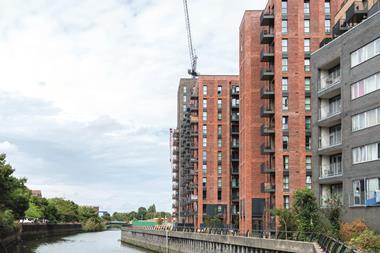A growing number of developers are exploring the use of timber in construction due to sustainability benefits, aesthetics etc. But how easy is it to insure these buildings?

For many years, insurance companies have been concerned about timber-frame developments because of the increased fire and water damage risks. For developers, the availability and insuring of timber construction can therefore come at a higher cost.
Naturally, timber-framed buildings have greater combustibility. The fire ‘load’ of the building being very high will drive the premium rate charged by the insurer. If this is combined with a very high rebuild value then it can become an obstacle to an insurer accepting 100% of the risk. If other insurers are involved in a co-insurance (scheduled) arrangement, this can have an impact on price, scope of cover and availability of insurers.
Timber not only burns, it can also get very soggy. Escape of water from internal pipes and plumbed goods or water ingress from external sources can result in exacerbated damage and interruption to residents.

Rebuilding and repair costs can be increased where timber construction materials have been used, because they may have been constructed in a ‘kit’ format either on or offsite. Repairing the damaged unit may require the dismantling of the surrounding units, which will increase costs and interruption timescales, all influencing the premium terms quoted.
Insurers will work on the basis that the developer who constructed the building using timber, or those involved in its extension or conversion, have done so in accordance with building regulations and fire safety requirements.
When arranging insurance, it is essential that all facts are disclosed to an insurer that are material to the risk proposed. Failure to make a ‘fair presentation of the risk’ to an insurer could lead to the claim or policy being avoided, any claim payment reduced and/or the imposition of terms retrospectively. Facts are not confined to those known by the insured/proposer but include those that could be reasonably known by a reasonable search of information.
For developers, understanding the construction of your property in an insurance context is essential.
Jason Oldham is client services director at Pi-Property Insurance






























1 Readers' comment